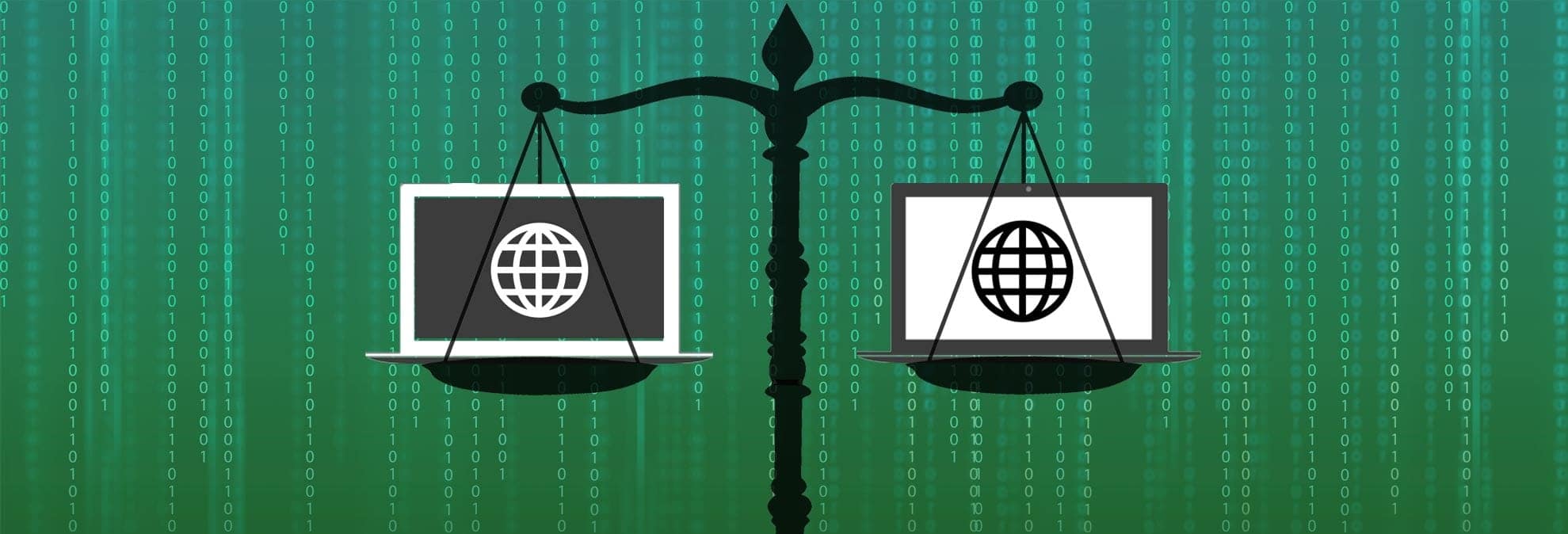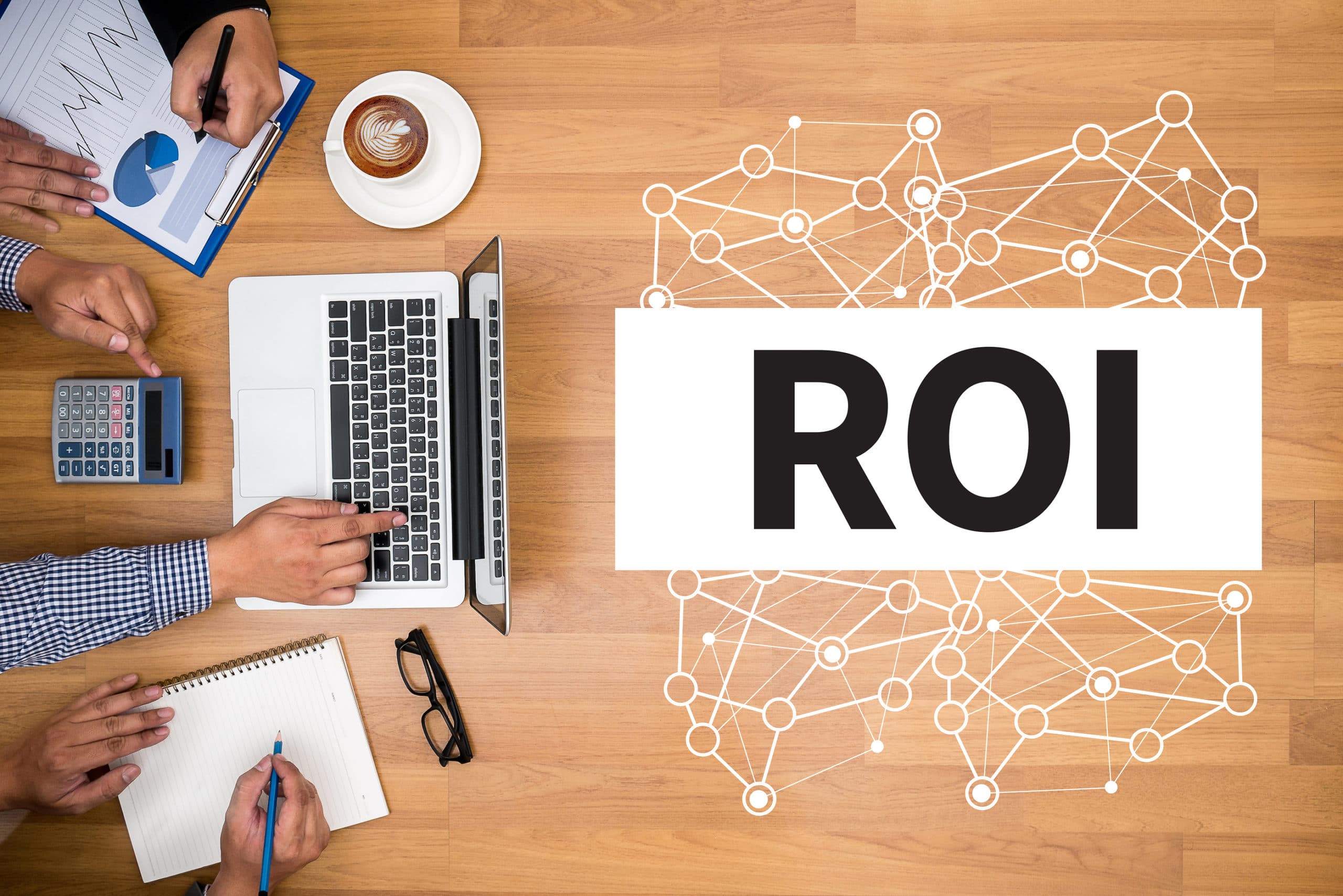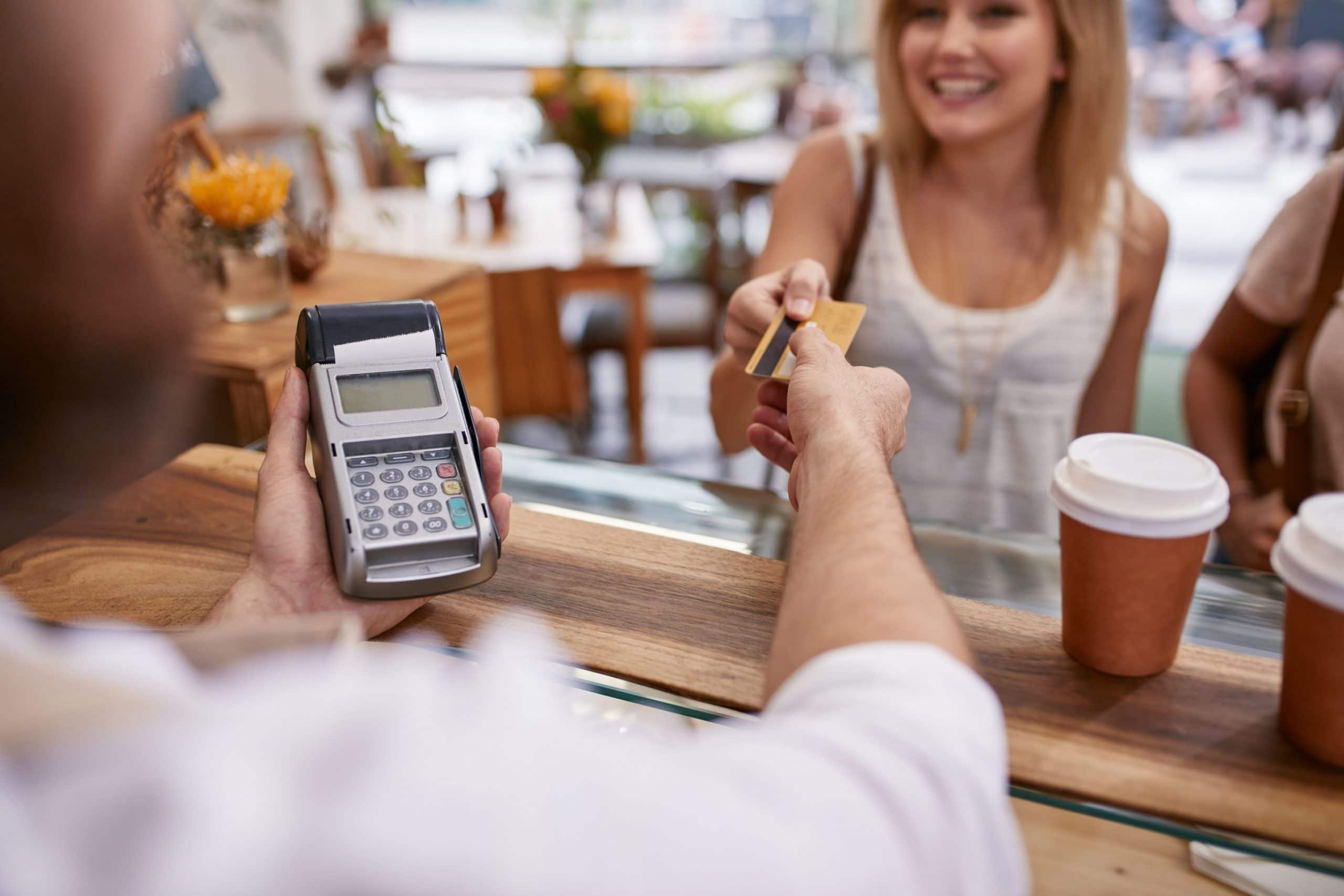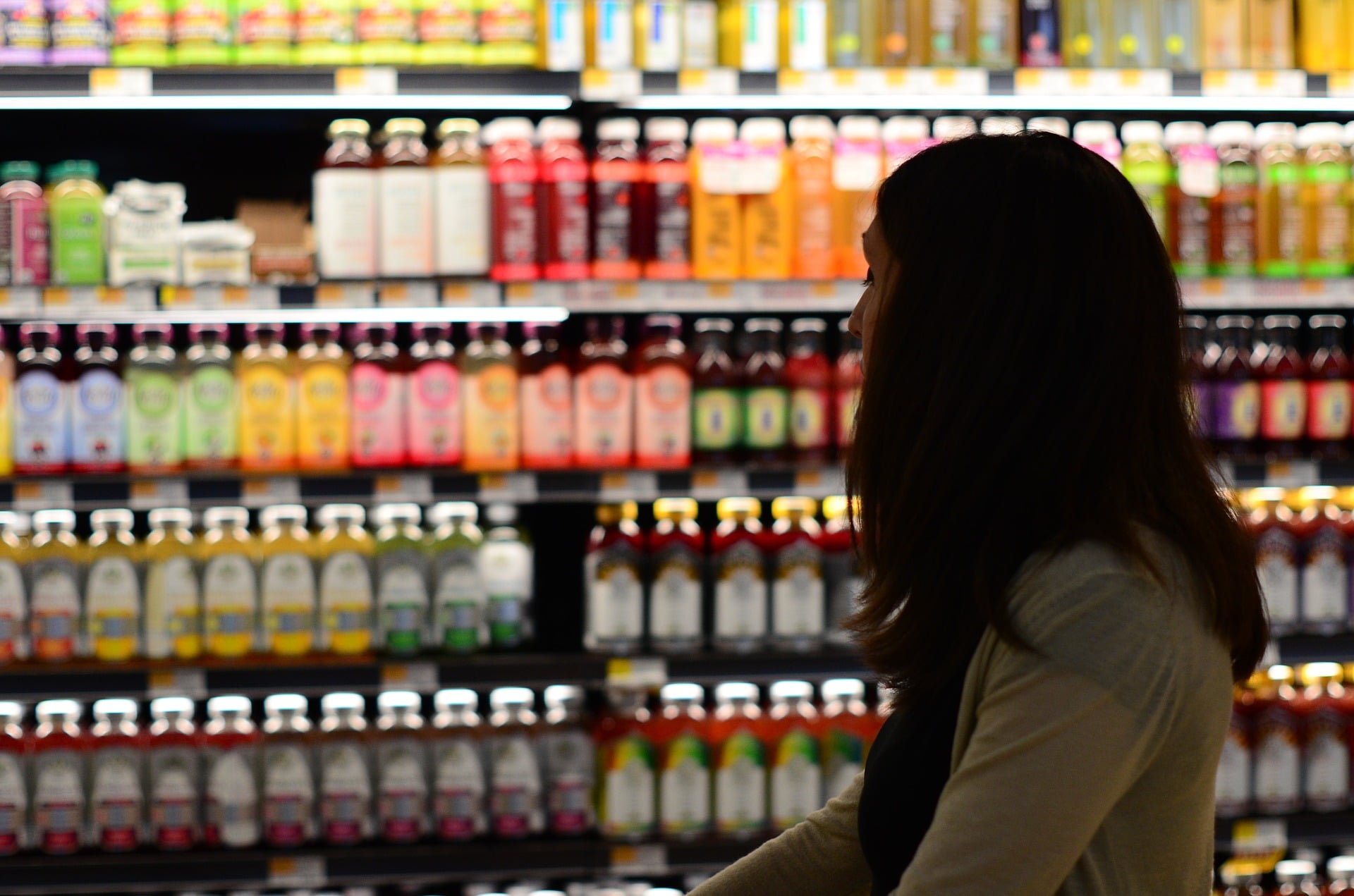Video is among the most popular and highly-convertible mediums for mobile advertising. Continue reading “Mobile video advertising: Best practices for CPG brands”
Category: CPG
How to create brand awareness—and excitement—for new products
A new product launch is an exciting, but also nerve-inducing, event for any CPG brand. You’ve done market research and held focus groups—and you believe that you have a product that will resonate with consumers. However, even big data can’t guarantee a successful launch. For that, you need a powerful marketing campaign that will excite and engage your target audience.
 Knowing how to generate brand awareness for new products requires, above all, knowing your market. There are virtually millions of CPG products on the shelves for consumers to choose from; a successful launch is increasingly dependent on taking a digital approach in order to break through the noise of a crowded marketplace. And that means leveraging mobile platforms and social media to create buzz.
Knowing how to generate brand awareness for new products requires, above all, knowing your market. There are virtually millions of CPG products on the shelves for consumers to choose from; a successful launch is increasingly dependent on taking a digital approach in order to break through the noise of a crowded marketplace. And that means leveraging mobile platforms and social media to create buzz.
Many brands have been able to proactively gain attention for new products on a national or even global level, and thereby achieve a successful debut. Let’s explore how you can adapt one such brand’s tested strategies to ensure your own product launch sees similar results.
How to Create Brand Awareness and Buzz for New Products and Marketplaces
Whether you’re introducing a new product into an existing market or pushing an established product into an untapped market, the one thing that product needs is buzz. While the word is short, the path to earning it is not. In fact, it’s estimated that only 15% of new products succeed in the CPG industry. Brands that have faced this challenge head-on and launched a breakthrough product typically have this one thing in common: they got consumers engaged.
Let’s consider the case of Milk-Bone’s Brushing Chews. The company identified a common problem, canine dental health, and reached out to partners who could help them solve it. Prior to the product’s launch, the brand worked with several retailers to customize their message based on the demographics of the retailers’ audiences. They also spearheaded a social media campaign focused on pet dental health with the help of veterinary professionals to gain credibility and help to drive interest. In one year, sales for the product topped $50 million.
The brand successfully created brand awareness for a new product launch by:
- Solving a universal problem: Pet parents rarely brush their pet’s teeth as it’s a challenge both for the owner and the pet. Milk-Bone saw this dilemma and capitalized on it to launch a new product that turned a task into a reward.
- Building a social media campaign: The company used a series of online videos featuring their mascots Ted and Rudy, a man and his beloved dog. The videos featured an engaging duo demonstrating the product; viewers were excited to share and comment on it.
- Creating mutually beneficial partnerships: Veterinarians were the first to raise concerns about the lack of dental care for pets, so Milk-Bone decided to work with them to get the word out about their toothbrush-esque product. Milk-Bone was able to get the support of these industry leaders while veterinarians received a solution to a problem they saw every day.
Through these marketing efforts, Milk-Bone was able to roll out a new CPG product launch that was one of the most successful in the sector in 2014. They gained popularity and sales for their product by focusing on the common needs of their target audience.
Adapting Milk-Bone’s Strategy to Create a Successful Product Launch
It should be noted that Milk-Bone was up against some tough competition. Their competitors’ products, however, tended to be marketed as medicinal, rather than as treats. Milk-Bone created a niche presence for themselves and leveraged partnerships with trusted industry professionals to spread a powerful message.
Regardless of the product your company is selling, you can adapt some of their strategies to improve your own launch and build brand awareness:
- Bend categories: Milk-Bone is a company that primarily provides dog treats. However, with the rollout of their brushing chews, they moved into the health category. As they were the most dog-friendly option in the health category, they became a go-to option for many pet owners. Launching a product is often easier when you’re the stand out among a fixed group of competitors. Find your product’s unique selling point and use it to compete in a less aggressive category.
- Leverage social media: Milk-Bone rolled out their new product on several platforms, including social media. Their online videos, in particular, resonated with pet owners. Video advertising can generate a high ROI and can be a great tool for building buzz and engagement among consumers before your product even hits the retail shelves.
- Create partnerships: You don’t necessarily have to work with industry experts to carve out a place for yourself in a crowded market, you just need to find a partner that consumers already trust. Shopping apps are a great tool for CPG companies as they help spread your brand’s message to a wider and active audience and help you build the buzz you need for a successful product launch. They allow you to travel with the consumer through the ever-increasing shopping aisle, providing more powerful opportunities for in-the-moment messaging.
By taking a unique slant with your product and marketing it through digital avenues, you can gain more attention and brand awareness for your next product launch. Partnerships, like the ones you build with shopping rewards apps, can also help get the word out about your product to gain consumer’s interest. These apps can give you access to a new audience of consumers who are already engaged—and ready to help create buzz for your next product.
Shopkick is a popular shopping reward apps with partners and consumers alike. Our partners have found success in reaching new audiences and launching new products. To learn more, contact our team today.
Image courtesy Olivier Le Moal
The 3 new CPG marketing trends that brands must know
CPG marketing is in the midst of a paradigm shift. In the past, many CPG brands focused on partnering with retailers to gain market share, rather than reaching out to consumers directly. However, as web and mobile-based options like online ordering have increased, so has a divide between CPG brands and retailers that many did not believe would ever exist.
CPG brands must be prepared to reach out to consumers more directly than they have in the past, and they must be willing to do so in new markets. The top three trends in CPG marketing reveal that consumers are becoming increasingly savvy and demanding a higher level of attention from brands.
 Today’s CPG industry trends are less about the products themselves, and more about the end user experience. And many revolve around digital marketing. You must take a consumer-focused approach and shift your marketing perspective from selling your product to a faceless audience to reaching out to your consumers on a more personal level. The top three new trends of CPG brand marketing all have a common theme: engage, engage, engage.
Today’s CPG industry trends are less about the products themselves, and more about the end user experience. And many revolve around digital marketing. You must take a consumer-focused approach and shift your marketing perspective from selling your product to a faceless audience to reaching out to your consumers on a more personal level. The top three new trends of CPG brand marketing all have a common theme: engage, engage, engage.
CPG Marketing Trend #1: Pre-Enter Emerging Markets
You must stay ahead of your product. That means that when preparing to roll out your brand in a new market like India, China, or other high-growth regions, you need to start advertising it before you release your product line on retail shelves.
CPG mega-brand Procter & Gamble is one such company that’s putting a heavy focus on this strategy. When the brand wanted to gain attention for its products in China, they partnered with producers of several popular reality shows in the region. Their products were shown being used by reality stars before those products even hit store shelves. This approach helped China become the fifth most valuable country for the company, as consumers were excited for the products before their launch and purchased them the first chance they got upon their official introduction to the market.
When preparing to roll out your brand in a new market like India, China, or other high-growth regions, start advertising it before you release your product line on retail shelves.
By previewing their products on popular shows, P&G was able to enter a market already eager to sample their products. When they launched their line, consumers were excitedly waiting to buy. Other brands can follow their lead by beginning their advertising efforts for new products or markets well before launch dates to increase the attention they’ll get when finally released.
CPG Marketing Trend #2: User Generated Content
Approximately 84% of millennials admit that they don’t trust advertising claims. What they do trust are the reviews of other users; 70% of consumers will consider a recommendation from another user over direct advertising from brands. This is why user-generated content, even when anonymous, is so valuable.
Here are a few examples of effective user-generated content:
- Pictures featuring a product: An example of this would be someone showing off unique nail art on Instagram, and then sharing the specific brand of nail polish they used.
- Recommendations on forums: This type of recommendation would happen, for example, on a new mother’s forum when a user recommends a specific brand of ointment for helping relieve diaper rash naturally and effectively.
- Outright product reviews: When a consumer chooses to leave a product review on Amazon or other retailer’s website.
- Hashtags featuring brand names: When a user gives a positive review or shout-out on social media by including a brand’s hashtag to help garner them attention.
As you can see, user-generated content doesn’t have to be on a large scale. The key is to encourage these user interactions. Host contests that require the use of your products, repost positive reviews from consumers, and, above all, thank consumers for their participation. Any opportunity to help consumers find and use your product is one that should not be missed by CPG brands in the era of digital marketing.
CPG Marketing Trend #3: Mobile-Assisted Shopping
The internet has changed the way that consumers shop—even when they’re shopping in a brick and mortar location. These days, consumers want to be able to do everything with their smartphones, from writing a grocery list to collecting coupons to earning rewards points. Several advances in technology have driven this trend, including:
- In-store beacons: Beacons can send messages to mobile devices with a compatible app to notify consumers of products, deals, and special events in the store. These beacons essentially act as GPS devices, helping consumers navigate their way through the sea of products from aisle to aisle.
- Digital rewards programs: Instead of saving up points via punch cards or mail-in offers, consumers are now demanding the ability to track their rewards points and loyalty program information via their phone number or email addresses. This convenience has sharply increased the number of users who participate in these programs.
- Search engines: Consumers only used to research high-expense items before a purchase. Now, 70% of consumers report researching even low-cost grocery products via mobile devices while in-store. Mobile search engines allow these consumers to get an at-a-glance opinion of your product while they’re on-the-go.
- Shopping apps: Shopping apps combine these technologies. They can be used in-store, provide rewards points that consumers can save and access on their smartphone, and even allow shoppers to share their opinion of a product with other users of the app.
Consumers are becoming savvier about where they spend their money, both online and in-store. As such, your brand needs to focus on creating a deeper connection with its target market. Technology can help you reach out to them while they’re attentively browsing the aisles. Mobile is poised to become one of the most significant purchase drivers for the CPG industry, which is why it should be a major focus of your future marketing efforts.
Mobile is poised to become one of the most significant purchase drivers for
the CPG industry
A third-party shopping app is often a cost-effective solution for leveraging mobile while minimizing the impact on your marketing budget. These apps allow you to reach new audiences and encourage them to engage with your brand. If you’re looking for a way to incorporate the top CPG trends into your marketing mix, partnering with a third-party shopping app can be the ideal solution.
Shopkick’s proprietary shopping app can help you connect with your target market in the store and out. For information on becoming one of our partners, contact our team today.
Image courtesy YakobchukOlena
Brand awareness marketing strategies with proven ROIs
Brand awareness is the first step in growing market share for a CPG brand. When consumers are aware of a brand, they’re more likely to give it a try and possibly become a regular user. However, gaining this brand awareness is a challenge as a crowded marketplace has been a CPG industry trend in recent years—and will continue into 2018.
 An effective brand awareness marketing strategy is not simply one that reaches your target audience but also one that has the potential to convert that new audience into active customers. There is still an abundance of opportunities to reach out to consumers despite growing competition in the sector, whether it be at brick and mortar locations, through social media, on television, or via radio advertisements.
An effective brand awareness marketing strategy is not simply one that reaches your target audience but also one that has the potential to convert that new audience into active customers. There is still an abundance of opportunities to reach out to consumers despite growing competition in the sector, whether it be at brick and mortar locations, through social media, on television, or via radio advertisements.
While the strategies available to CPG brands looking to grow awareness are numerous, the effectiveness of each option varies greatly. To gain a greater ROI from your brand awareness marketing strategy, you need to be able to connect with consumers in a way that makes your brand memorable. Many established companies have already successfully managed this—and you can use their examples to guide and educate your own growth efforts.
Online Brand Awareness Strategies That Offer Strong ROIs
When building brand awareness for a CPG brand, you need to consider the goal of your target audience when they begin a search that will eventually lead them to your product. Consumers don’t always begin an online search with the intention of buying a specific product. Commonly, they are searching for information, a story, or simply to be entertained. Here are a few ways that successful brands have used online strategies to grow brand awareness:
- Coca-Cola and connecting through icons: Many people have heard the rumor that Santa’s red outfit actually came from a Coke campaign. While not exactly the whole truth, there is a grain of reality to it, as the Santa we see today is heavily influenced by Coke’s marketing campaigns from the 1920s that depicted a very realistic Santa. By connecting their brand to an iconic figure, Coke was able to significantly increase their brand awareness. That awareness reached a point where some would say that Coke also managed to increase Santa’s brand awareness—at least the US version of him. Essentially, Coke managed to connect their product with a beloved figure, which transferred some of the adoration for that figure to their product.
- Dollar Shave Club and shock value: In 2012, the Dollar Shave Club rolled out of the gate with a viral marketing video that gained a lot of attention on a crowded platform. The video showed surreal images and came with the tagline, “Our Blades Are F**king Great.” The shock value of the video helped it gain 4.75 million views, with many of those coming from social media shares. The clear irreverence of the campaign gave the company an ‘everyman’ feel that consumers were quick to connect with and remember. Keep in mind: shock value doesn’t always prove successful as it can alienate some would-be customers. Ultimately, this is a decision you need to consider with your target audience in mind. Will the users it brings in develop a strong enough connection to make up for the ones that may be permanently turned off? For Dollar Shave Club, the answer was yes, as their target demographic of younger, blue-collar men, were more likely to be amused, rather than offended by the strategy.
- Pedigree and building an emotional connection: In 2015, Pedigree rolled out its “First Days Out” campaign. The campaign featured the stories of two recently released convicts and shared how their dogs helped them reconnect with a society that had changed significantly in the time they were in prison. While it was a bold choice, as many would not consider convicts the ideal brand ambassadors, it targeted individuals with a strong belief in second chances. Specifically, it targeted an audience of dog owners who would choose to adopt a dog from an animal shelter, rather than buying one at the pet store, connecting that whole ‘second chances’ theme. The tagline “You save a dog. A dog saves you” was one that resonated with those dog lovers. The four-minute video gained a lot of attention for the brand and helped them connect with consumers in a memorable way.
All three of these brands used unique ways to connect with consumers as market share growth strategies. Either by partnering with icons they loved, creating a shocking moment, or tugging at consumers’ heartstrings, they were able to solidify their brand in front of a new audience. This is something that any brand is capable of achieving—and can be adapted to work with today’s digital platforms.
Adapting Your Brand Awareness Marketing Strategy to Maximize Your ROI
While the brands from the above examples focused on large campaigns, brands can also do all of the above on a smaller scale and achieve similar positive ROI results. Every measure that gets your brand in front of a new audience can offer a valuable opportunity. Simply by breaking down the larger campaigns into smaller components, we can see how this is done:
- Partnerships: Your brand doesn’t need to integrate well-known icons into every commercial. Instead, you can leverage smaller partnerships to cross-market your products. This can be via partnerships with an online personality, or even with another, complementary CPG company. Shopping apps work to increase brand awareness as they expose your brand to an entirely new and actively engaged audience.
- Anti-advertising: One of the reasons that the Dollar Shave Club video was so unique was that it allowed the brand to gain consumer attention through something other than outright product advertising. The video was played for laughs and, because of that, it drove viewers to want to watch—and share—it. Your brand can adapt this strategy by offering information or stories to consumers in a way that’s intriguing and memorable.
- Personalization: The Pedigree commercial was memorable because it connected specifically with pet owners. Your brand can do this by finding a way to personalize communications based on who you’re reaching out to—or even when you’re reaching out. Consider the case of shopping apps again, only this time in regards to leveraging geolocation technology. If a consumer is in a store aisle looking for a whitening toothpaste, they may receive an advertisement for a specific brand of this or a complementary product. This is contextually relevant because the person is in a shopping environment, and are then offered incentives to either visit a store or interact with a specific product, driving awareness of your brand.
You don’t need a massive marketing campaign when using the strategies of other successful brands for building brand awareness. You simply need to be able to leverage the partnerships available to you to create a compelling message in the right moment. Shopping apps offer just such an opportunity. In partnering with an engaging third-party app to deliver your message to new and current target audiences, you can create a brand awareness marketing strategy that also ushers them through the sales funnel—ensuring your campaign delivers a positive ROI.
Shopkick is a shopping app that allows our partners to take advantage of the latest technology to share messages with consumers in real time. For more information, contact the Shopkick team today.
Image courtesy Gajus
Why market share is important for growth: A guide for CPG brands
When you’re green, you grow; when you’re ripe, you rot. This well-known adage speaks to the marketing concept that the only way a company can survive is through continuous growth. There is no standing in place when it comes to the consumer packaged goods (CPG) industry.
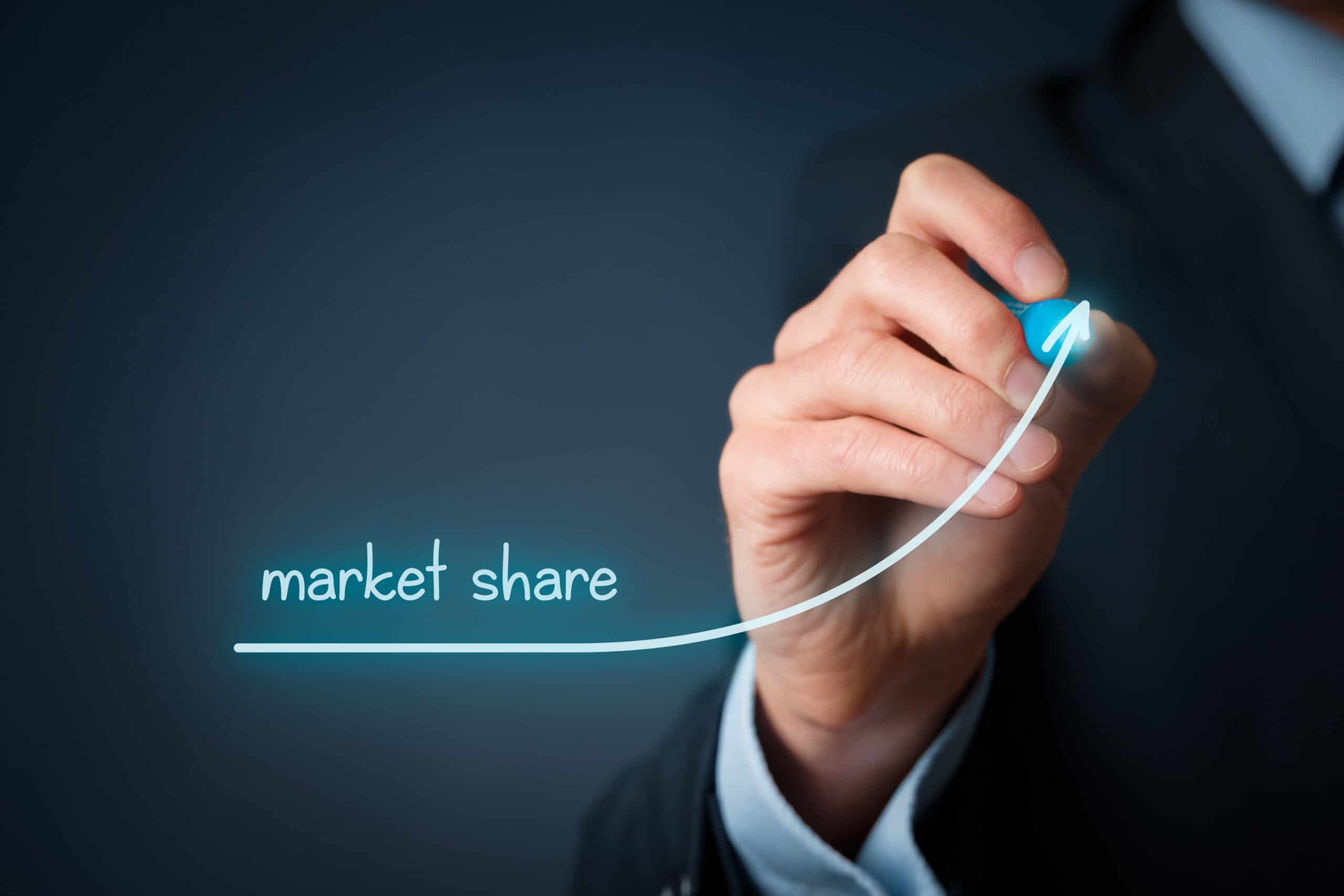
Continue reading “Why market share is important for growth: A guide for CPG brands”
Video advertising: Advantages and disadvantages for brand growth and awareness
Video advertising’s potential advantages and disadvantages are open to debate. Many companies have found video to be a powerful converter and have made it an integral part of their marketing campaigns. Others choose to go with more traditional advertising avenues. Determining if it will be profitable for your own brand is something that’s often difficult, though, as calculating the return on investment for video advertising isn’t possible until after you’ve run a campaign and can crunch the numbers. However, if you’re aware of the common barriers to success related to video marketing, you can overcome them and effectively utilize the medium to boost consumer awareness of your brand, and, as a natural result, sales.
Positioning video advertising to get your brand’s message across can be highly impactful on your brand awareness and bottom line, provided you use the right tools to make it visible. One way to see a significant return is by crafting a compelling message and delivering it through third-party platforms. First, however, you must have a firm grasp on the advantages—and disadvantages—of video advertising in the digital age.
The Advantages of Video Advertising for Brand Growth and Awareness
It can’t be denied that video has a certain appeal that text and image-based advertisements don’t. While it can be a bit more expensive or time-consuming to develop than other mediums, it allows you to deliver a message that connects with consumers in a deeper and more genuine way.
Here are a few of the advantages of video advertising for brands:

- Video is popular: The first and most obvious reason to choose video is that it’s simply what consumers want. More than 70% of the online US public regularly watches streaming video online. This is an audience that can’t be ignored.
- Video is a powerful converter: Video is an excellent way to increase brand recall. In one study, it was noted that 80% of respondents remembered the videos from brands they’ve watched in a 30-day period. That’s not the case for text and photos, which consumers are inundated with so often they rarely remember individual instances of advertising.
- Video gives your brand a personality: Video allows you to give your brand or product a personality. They allow your consumers to connect with a person or situation, rather than an image, which can help to humanize your brand.
- People share videos: It’s estimated that 92% of individuals who’ve viewed a video have shared a video. If you’re looking for an innovative way to increase brand awareness, then this is a number that you need to consider, as the more people who share your brand’s message, the more that awareness will grow.
Video is clearly an advantageous option for many brands of all sizes as it allows you to create a message with genuine impact. It’s specifically successful for growing brand awareness, as people remember and share videos more often than they do any other kind of content. That being said, it must be noted that video can have its disadvantages as well.
The Disadvantages of Video Advertising for Brand Growth and Awareness
While video might be a great medium for marketing, it needs to be acknowledged that not just any video can compete against a similar product or company that puts out quality text and images. A bad video can cost your company more in the long run as you could invest a lot only to see a minimal return on your investment.
Here are some of the potential disadvantages to consider with video advertising:
- The market is saturated: While video advertising has a lower cost of entry now than it did in the past thanks to new tools like low-cost cameras and free-to-use hosting platforms, that benefit creates a disadvantage as well in that anyone can make a video. It’s estimated that 300 hours’ worth of video is uploaded to YouTube every minute! That’s a large pool that your brand is going to have to compete against.
- Video doesn’t promote itself: Due to the staggering number of videos online, it’s not possible to simply post a video and hope for the best. Marketers need to essentially market their own advertising tools by sharing it—and ideally convincing others to share it as well.
- A commercial is still a commercial: If your video is strictly advertisement-based, don’t expect a strong conversion. A big part of ad conversion is ad viewability. After all, a commercial is still a commercial. About 65% of consumers who watch online videos skip commercial ads. Brands that do the best with video don’t advertise. They offer content with real value.
While there are disadvantages of video, they can be overcome with better marketing, the right partners, and the right timing. By being aware of potential pitfalls, you can use the benefits of video to its full advantage.
Balancing the Advantages and Disadvantages of Video Marketing
The types of videos that get shared and improve brand awareness aren’t advertisements. Instead, they’re videos that provide useful content to the viewers. If you’re going to release video as a medium to advertise, it’s important to create branded content over pure product advertisements. Branded content may include:
- How-to videos: These can be videos that show how to use your product or answer questions about it. They can also be videos that show your product being used in a new or unique way.
- Product reviews: User-generated content, like product reviews, are a good way to share your brand’s message through a third-party. While not as easy to control, if you get a good review, ask for permission to share it on your brand’s page.
- A behind-the-scenes look: People want to work with companies that feel human to them. Giving a consumer a sneak peek inside your company or interviews with your employees, for instance, helps to humanize your brand.
The options are extensive but the key to video advertising is to create content that’s not simply based on making a sale. Put yourself in your consumer’s shoes and ask yourself “Would I watch this?” when you’re considering a video campaign.
In addition, you need to put your marketing muscles behind that video. Share it on social media, your website, and encourage consumers to share and comment as well. One good way to leverage video is to offer it via a shopping endemic publishing platform, such as a shopping app. You can leverage strategically placed videos within these apps to help your brand stand out and increase consumer awareness.
When partnering with a shopping app, there’s a built-in and engaged audience at your fingertips. By creating a compelling video with a powerful, branded message, you can grow awareness of your brand exponentially.
Shopkick offers our partners the opportunity to reach users with video messages within an endemic shopping environment. If you’re interested in gaining more attention for your branded video content, contact our team today to learn more.
Image courtesy GaudiLab
Continue the battle to defend net neutrality
With Black Friday and Cyber Monday just behind us and the busy holiday shopping season still very much in swing, our free and open Internet is still at risk. We have tried to fend off the attacks, but the Federal Communications Committee (FCC) is now calling for a December 14 vote to end Net Neutrality as we know it.
What is Net Neutrality?
Right now we have access to every website from every Internet connection in the world. This freedom of information is easy to gloss over and often taken for granted. After all, this is all we know – the Internet started this way and has always been this way. Net Neutrality is the basic principle that protects our free speech on the Internet.
What are we fighting for?
Today, this very fundamental right is under threat. The companies that provide the Internet network connections (telecom and cable companies mostly) want to charge more for our right to access certain websites depending on the content within them. This will mean that the Internet will become more like cable TV, and will offer premium ‘channels/websites’ for an additional fee.
Furthermore, the free and open internet is fueling economic growth with e-commerce growing to nearly $400 billion in retail sales last year. Our current net neutrality rules support innovation and free and open competition for retailers and entrepreneurs.
The FCC recently released a draft order that would end this open commerce. Without net neutrality, internet service providers will be able to favor certain websites and e-businesses, or the platforms they use to garner new customers. They can control the speed at which content is delivered to visitors based on how much the websites and businesses pay.
What can we do about it?
At Shopkick, we proudly join many major tech companies including Airbnb, Reddit, and Pinterest in the fight to save Net Neutrality. Together, we can stop censorship and corruption. Our recent letter to the FCC warned of this disastrous net neutrality reversal.
This is one step in the right direction, but everyone’s help is needed. Join the battle to save the Internet.
How to increase market share of a CPG product using a mobile app
It’s no secret that many CPG product categories have fierce competition and are often purchased on price. This is perhaps why the CPG market is considered to be the most difficult for even established brands to grab a larger share of. If your goal is to increase market share, a mobile CPG marketing strategy that penetrates a consumer’s time in-store could help you achieve it.
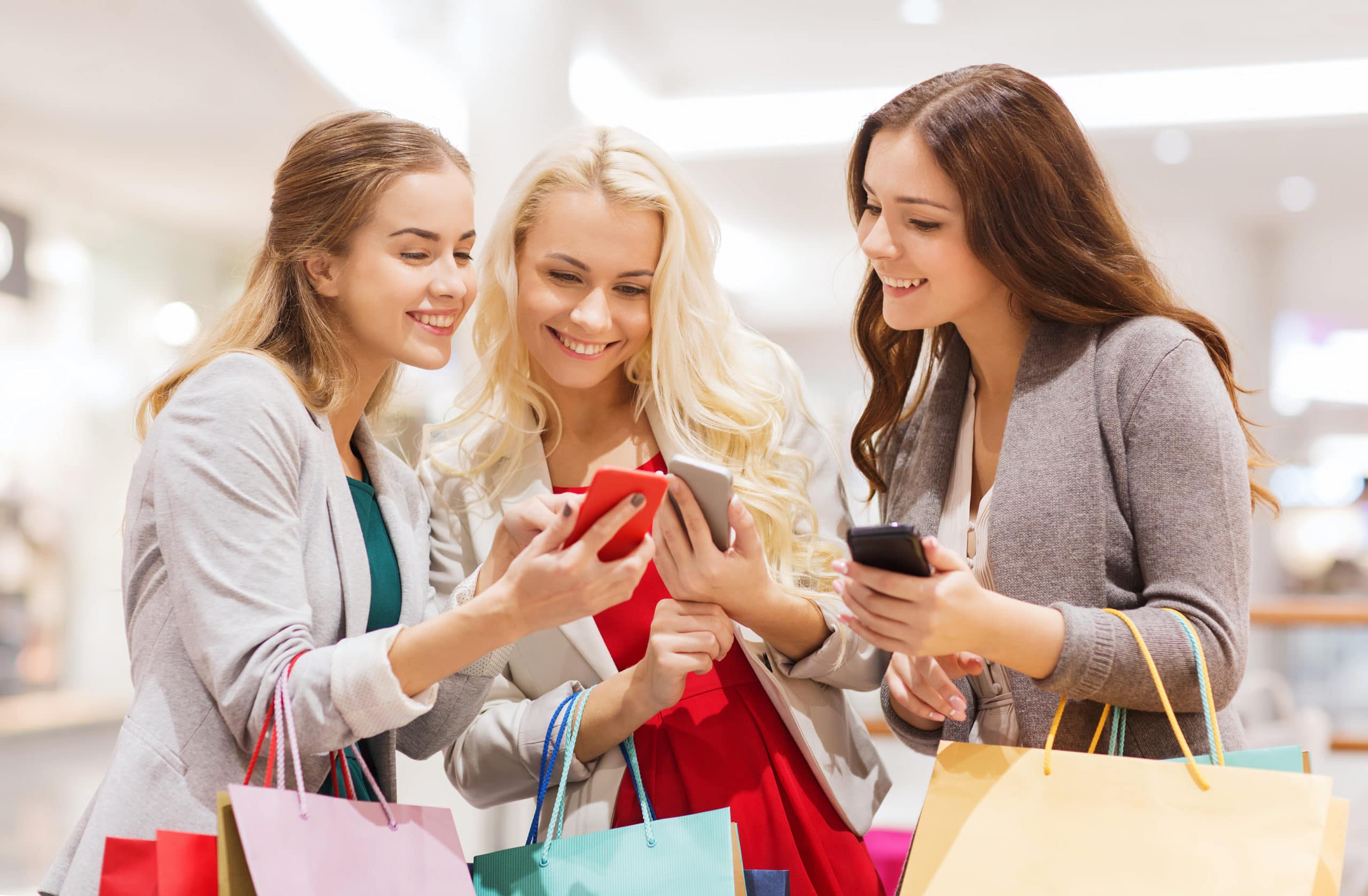 Mobile app marketing is a cost-effective method for increasing market share for CPG products. Alternative options, like ramping up advertising spend, are expensive and not always guaranteed to offer a significant return on investment. Marketing via mobile apps, however, can give you a competitive advantage by differentiating your product as they reach customers in the moment of truth in-storen, driving consideration for your product.
Mobile app marketing is a cost-effective method for increasing market share for CPG products. Alternative options, like ramping up advertising spend, are expensive and not always guaranteed to offer a significant return on investment. Marketing via mobile apps, however, can give you a competitive advantage by differentiating your product as they reach customers in the moment of truth in-storen, driving consideration for your product.
Below, explore how your company can leverage mobile tools like geolocation, timely contacts, and shopping rewards to deliver the conversion you’re seeking from your marketing dollars. Strategies for how to increase market share of a product can be as simple as partnering with a mobile app.
Common Barriers to Market Share Growth in the CPG Industry
There are several common market share growth barriers in the CPG industry that could block your attempts to gain attention for your products. These barriers are the things that keep consumers from choosing your product, despite advertising and shelf visibility, so you must find creative and effective ways to combat them in order to grow.
Generally, a market share growth barrier will fall into one of the three following categories:
- Loyalty: It seems odd to treat loyalty as a negative, but it certainly is when a significant portion of your product’s target demographic is loyal to a competitor. Customers who are already engaged with a brand are five times more likely to choose that brand’s products over another.
- Similar products: The CPG market in the US alone is worth $670 billion, which should confirm to any CPG marketer that competition is fierce. If your product is difficult to differentiate from others in its category, it can be next to impossible to make a dent in your market share. The less your product stands out, the harder it will be to garner new attention from consumers. This is especially true if your product’s price point is higher than your competitors’ without offering some additional benefit.
- Price point: About 10% of consumers are willing to stick with the lowest priced product, even when they’re aware of a similar product which will provide a superior experience. Consumers who are focused on price point will always be focused on price point. Because of this, pulling these consumers to your brand will only work if you discount your prices lower than others. However, as soon as your price increases again, you will likely lose that customer—and the market share they represent.
A majority of the issues that CPG brands run into when trying to increase market share for a product is that their barriers span all three categories. Their product may be difficult to differentiate from others and may not have the lowest price point, meaning they can’t gain the price-conscious consumers. However, they also haven’t earned the loyalty from consumers who are focused on quality over price. One strategy to stand out from the CPG crowd and combat each of these barriers is utilizing a mobile app to showcase and differentiate your product.
Learn How to Increase Market Share of a Product Using Mobile Apps
Despite the common barriers listed above, it is still possible to gain greater market share in your category. One of the most effective marketing strategies you should leverage is mobile shopping apps. These apps allow you to reach out to customers when they are in the moment of making a purchase decision. Third-party apps in particular, like shopping rewards apps, are ideal for increasing market share as they allow your brand to connect with a new and receptive target audience.
Here is how mobile apps help you combat the barriers to increasing market share of your products:
- Compete against lower price points without cutting prices: If you don’t want to lose margin by discounting, or want to focus on quality, shopping apps offer an alternative to incentivize price-conscious shoppers via rewards. While consumers don’t receive an immediate discount, they do earn rewards points for their purchases. This allows them to feel thrifty and budget-minded while eliminating the negative impact of discounted prices on your bottom line.
- Utilize geolocation to gain contextual relevance: Shopping apps can be designed to work hand-in-hand with beacons and other location technology. Via these technologies, shopping apps notify a consumer when they’re near your product and provide information about it. If you’re in a product category with high competition, this can allow you to gain the attention of your target audience at the right moment—i.e., when they are ready and able to make a purchase decision.
- Convert loyal customers with a trusted audience: Consumers who use shopping rewards apps tend to be very loyal to their favorite app. Often, their trust of the app will extend to any featured product or brand as well. This can be enough to pull a competing brand’s loyal customer to your side of the endless CPG aisle.
Shopping apps can increase your product’s market share without the high expense of awareness campaigns or competitor acquisitions. By partnering with a well-established third-party shopping rewards app, you can easily overcome common market growth barriers like competitor loyalty, lack of product differentiation, and price-focused consumers. Mobile shopping apps allow your product to stand out on overcrowded store shelves by communicating in the moment to an engaged and interested audience.
Shopkick’s mobile platform is used by a wide range of partners looking to increase their market share. If you’re interested in learning more about what Shopkick can do for your brand, contact our team today.
Image courtesy dolgachov
The CPG Industry Trends of 2018 That Brands and Retailers Must Prepare For
Can brand awareness generate measurable ROI for CPG companies?
Brand awareness is extremely important for CPG companies as they face a unique challenge: they often sit side by side with their competitors on shelves or online stores. Continue reading “Can brand awareness generate measurable ROI for CPG companies?”
Measuring the effectiveness of customer loyalty programs in the mobile marketing age
Loyalty is a key sales driver for retail stores but many methods of measuring it are ineffective. Continue reading “Measuring the effectiveness of customer loyalty programs in the mobile marketing age”
How Retail In-Store Apps Are Reshaping Modern CPG Marketing
Although it’s a hot topic, in-store advertising is not a new or rare practice. Consumer packaged goods (CPG) brands do it all the time since retail spaces are often the best locations for them to grow. Typically this is done by negotiating the best spot on the shelf or by putting up in-store displays and ads. However, it is becoming more common for brands to advertise in-store using mobile apps.
 These apps can interact with beacons within a retail location, delivering offers to the consumer once they are within a certain proximity to the store, working in accordance with GPS tracking. This is particularly effective since 59% of consumers are using their mobile devices while they’re out doing their weekly grocery shopping.
These apps can interact with beacons within a retail location, delivering offers to the consumer once they are within a certain proximity to the store, working in accordance with GPS tracking. This is particularly effective since 59% of consumers are using their mobile devices while they’re out doing their weekly grocery shopping.
While advertising through a mobile app offers a direct line to the customer, it still needs to effectively grab their attention. Brands must find ways to leverage in-store experiences to get consumers interested in trying their products. Finding a unique slant on this is paramount to creating a successful campaign. Luckily, more than a few brands have built effective conversion strategies and have created unique experiences that you can use with your in-store mobile marketing plans.
How Top Brands Leverage In-Store Mobile Advertising
In-store mobile-based marketing is a relatively new marketing avenue, so many brands are approaching this medium with pilots. In-store events, advertisements, and offers have been developed by many different brands with varying levels of success. Additionally, in-store beacon technology is enabling these campaigns to be more successful. These are some of the tactics that the most successful brands use to take advantage of these innovations:
- Exclusive location-based offers: One way that Best Buy drove adoption of its rewards program was by using it to push in-store mobile marketing offers. Consumers who downloaded the app would receive exclusive offers when they went to the store. Once they entered a store, they were also able to unlock rewards points that they could use on purchases and exclusive deals.
- Cross-marketing opportunities: Often, there are in-store marketing opportunities from advertising alongside related products. For example, if you set up a beacon that advertises creamer or sweetener near the coffee aisle, the consumer will have more incentive to purchase it. The consumer may have come into the store to purchase a specific item, but now their app has enticed them to purchase additional products.
- In-store engagement: One thing that can really get consumers involved in-store is to get them to play games or interact with the brand via their mobile device. Ace Hardware does this through in-store sites where consumers are encouraged to text a phrase to them, at which point they receive an offer in return. Their app engages consumers by acting as a virtual scavenger hunt, which can improve conversions.
Using in-store beacons to reach a customer on his or her mobile device increases the likelihood that consumers will try out a new brand. At the very least it drives brand recognition, as in-store mobile experiences are particularly memorable. This is because consumers are engaged in using the app, so they’re more likely to remember the brand than if they were just passively watching television or browsing a website. CPG brands can model their in-store campaigns after those that other successful brands use. This helps ensure that their in-store messages have a lasting impact.
Tips For Building An In-store Campaign
Several brands have already found unique ways to leverage in-store marketing through mobile apps—and more are catching on. Consumers are responding to it too. For example, 70% of consumers in the CPG-focused Mobile Audience Insights Report reported that they decided to purchase a product for the first time after viewing mobile-based advertising. That number has nearly doubled since 2013. Nearly 70% also reported using their mobile device to research a CPG brand prior to purchasing it at a retail location.
Mobile advertising is changing the way that consumers shop, which is why you should change the way you leverage mobile in-store apps. That means creating a campaign that encompasses the following:
- A value-driven approach: Value-driven doesn’t necessarily mean discounts. Instead, it means that the message gives the consumer something, whether it’s a reward, information or simply an enjoyable experience. Basic advertisements have large impacts in-store, but they are not long lasting. However, advertisements that engage the consumer by interacting with your brand tend to have a greater overall impact.
- Proper consumer targeting: In-store advertising still needs to be focused on specific consumers. Consider two different consumers that are shopping in the same store. One is purchasing diapers, baby formula, and wipes. The other is purchasing a frozen pizza and a two-liter bottle of soda. Those purchasing behaviors allow you to draw conclusions in order to properly target the right consumer. So, if your brand is selling disposable baby bottles, then the first consumer is your ideal target. If your brand is selling chips, on the other hand, you’d likely want to target that second consumer. An app with high conversion potential will give you the data you need to make decisions like that.
- Is not heavily focused on discounts: Simply offering one-time coupons via an app may get you a one-time sale, but it’s not a powerful brand converter. Relying too heavily on discounts is a mistake. This is because it generally only attracts price-conscious consumers. It can also lower the way your brand is perceived. In-store apps should leverage rewards rather than discounts as a way of gaining consumer attention.
Mobile in-store advertising is changing the way brands target and convert consumers. This type of advertising allows your brand to follow consumers through their purchase journey, reach them at the right moments, and increase the likelihood that they will try your brand. Several brands have already used this successfully by creating unique personalized and interactive campaigns that pull in users.
As beacon-based advertising technology and mobile geolocation are both relatively new, it’s best to choose to work with a company that already has some understanding of the industry.
One thing that these brands do is leverage partnerships with third-party experts who understand the unique opportunities presented by mobile apps. As beacon-based advertising technology and mobile geolocation are both relatively new, it’s best to choose to work with a company that already has some understanding of the industry. This is where third-party shopping apps come in.
Third-party shopping apps allow you to access these in-store marketing opportunities quickly, without having to create an expensive, long-tailed marketing campaign. These apps also give you access to a database of active users who want to connect with your brand. For any company that wants to make a stronger in-store impact through mobile marketing, third-party platforms are the ideal choice.
Shopkick is a unique shopping app that allows its partners to leverage all of the best parts of in-store mobile advertising. To work with us and increase your in-store conversion, contact our team today.
Image courtesy Pixabay user kc0uvb


